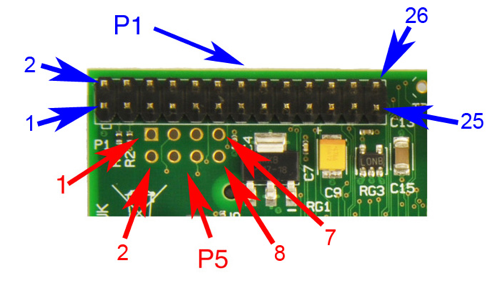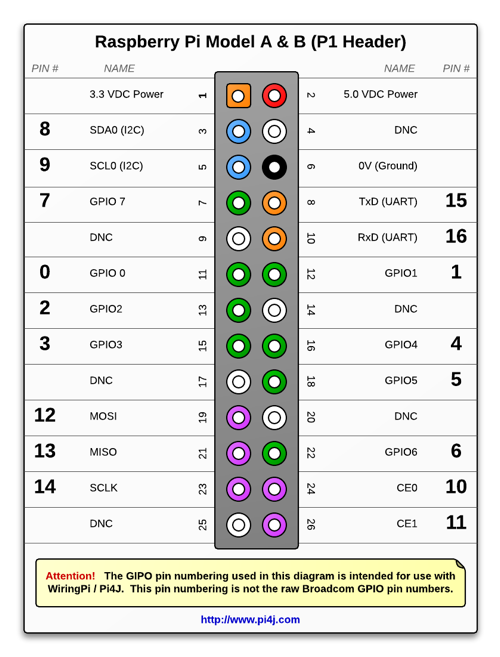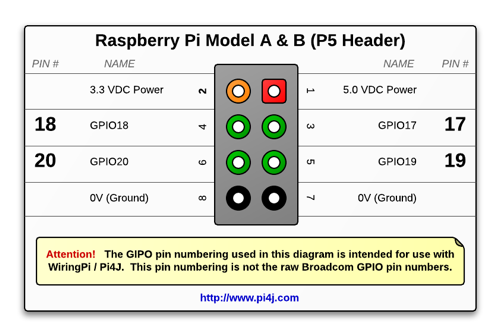Pin Numbering - Raspberry Pi Model B (Revision 2.0)
- Numbering Scheme
- Expansion Header
- P1 Pinout (26-pin Header)
- P5 Pinout (8-pin header)
- Additional Resources
Numbering Scheme
Pi4J (by default) uses an abstract pin numbering scheme to help insulate software from hardware changes.
Pi4J implements the same pin number scheme as the Wiring Pi project. More information about the WiringPi pin number scheme can be found here: http://wiringpi.com/pins/
Pi4J provides a RaspiPin enumeration that is used to manage the accessible GPIO pins.
(NOTE: Pi4J also can be configured to use the Broadcom Pin numbering scheme.)
Please see this page for more information on both the WiringPi and Broadcom pin numbering schemes:
>> Pin Numbering Schemes
Expansion Header
The Raspberry Pi Model B board revision 2.0 contains both a 26-pin expansion header labeled as 'P1' providing access to 17 GPIO pins and an 8-pin expansion header labeled as 'P5' providing an additional 4 GPIO pins for a total of 21 GPIO pins.

P1 Pinout (26-pin Header)
The diagram below illustrates the GPIO pinout using the Pi4J/WiringPi GPIO numbering scheme for the P1 header pins.

P5 Pinout (8-pin header)
The diagram below illustrates the GPIO pinout using the Pi4J/WiringPi GPIO numbering scheme for the P5 header pins. The P6 header does not have any header pins pre-soldered. If you want to make use of these pins, you will need to install and solder the header pins to the board. (NOTE: The P5 header is only available on (model A and B) board revisions 2.0 and newer.)

Additional Resources
- Please visit the usage page for additional details on how to control these pins using Pi4J.
- Click here for more information on the P1 header.
- Click here for more information on the P5 header.
- Click here for more information the Raspberry Pi pin functions.



